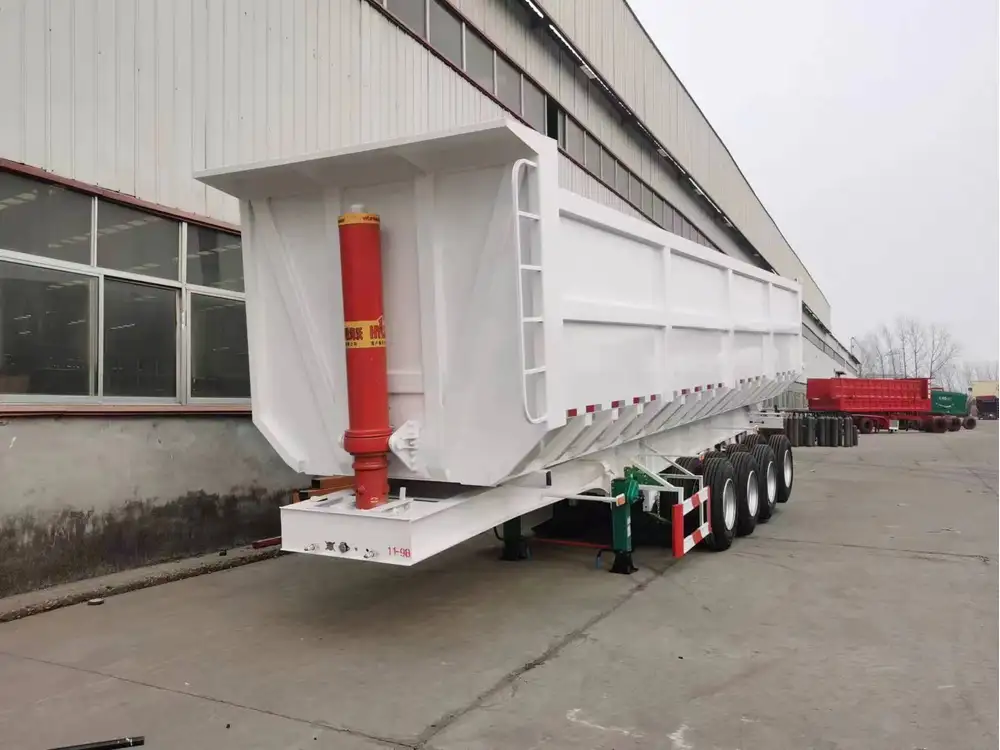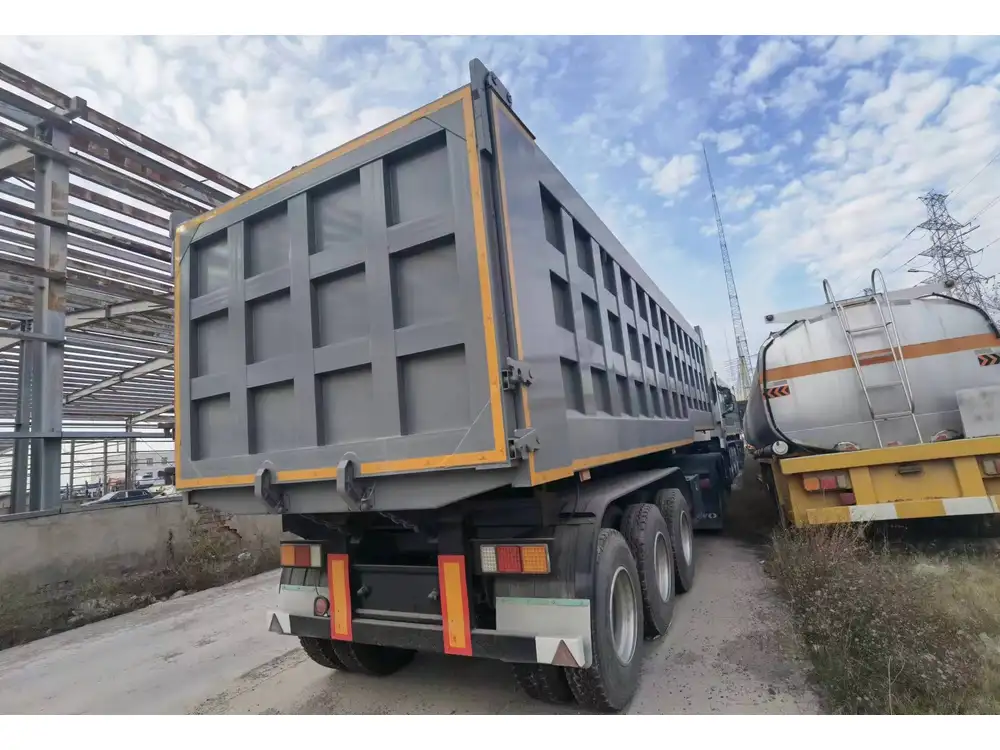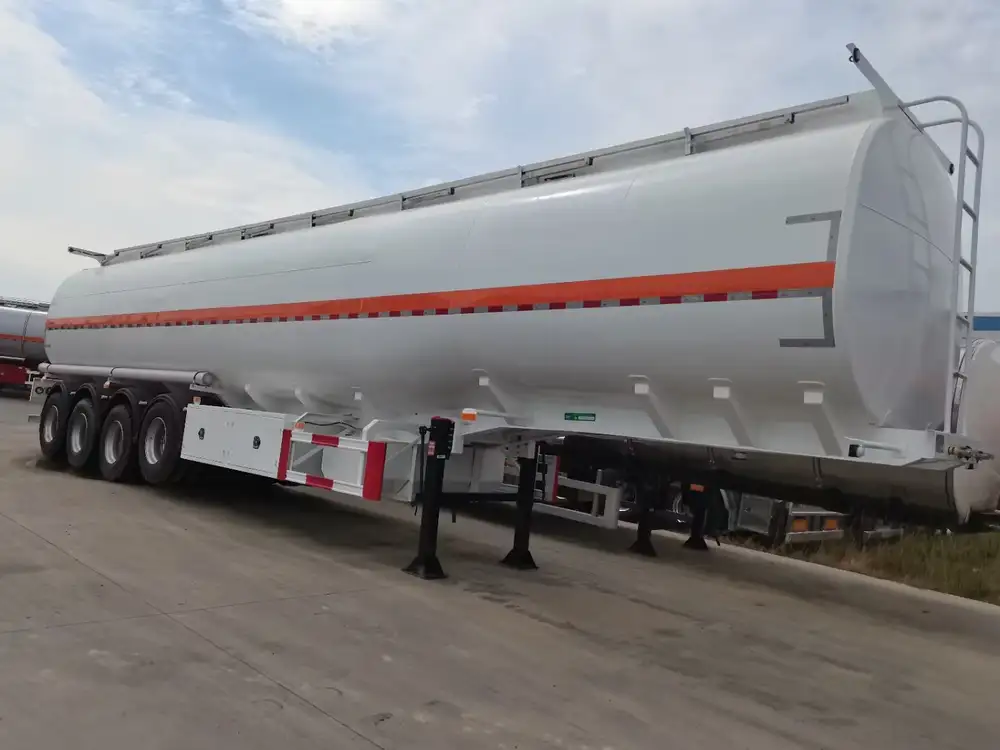In the realm of transportation and logistics, the dimensions of semi-trailers are pivotal. Understanding how many feet a semi truck trailer measures is fundamental, especially for shippers, freight companies, and logistics providers. This article will dissect the various lengths of semi-truck trailers, their implications in the industry, and considerations to keep in mind when dealing with these massive vehicles.
1. The Basics of Semi-Trailer Lengths
1.1 Standard Semi-Trailer Dimensions
The dimensions of semi-trailers can vary depending on their intended use, trailer type, and regulations in different regions. Typically, the most common lengths are:
| Trailer Type | Standard Length | Common Use |
|---|---|---|
| Tractor Trailers | 48 to 53 feet | General freight, long-haul transportation |
| Flatbeds | 48 to 53 feet | Construction materials, heavy loads |
| Refrigerated Trailers | 48 to 53 feet | Temperature-sensitive goods |
| Lowboys | 20 to 25 feet | Heavy machinery transport |

1.2 The Importance of Knowing Trailer Length
Understanding the length of a semi truck trailer is crucial for several reasons:
- Legal Compliance: Different states and countries have specific regulations regarding maximum vehicle length.
- Road Safety: Overlength trailers can pose safety risks on the road if not managed correctly.
- Logistical Planning: Proper planning ensures that loading docks, routes, and scheduling are optimized.
2. Semi-Trailer Length Variations by Type
2.1 Dry Van Trailers
Dry van trailers are enclosed and suited for most freight types. The common lengths are:
- 48 feet: Often used for standard shipments.
- 53 feet: Preferred for maximizing cargo space without exceeding weight limitations.

2.2 Refrigerated Trailers (Reefers)
Reefers maintain controlled temperatures for perishable goods. Their lengths typically mirror dry vans:
- 48 feet
- 53 feet
2.3 Flatbed Trailers
Flatbeds allow for loading from the side or top and are generally used for oversized loads. Common lengths include:
- 48 feet
- 53 feet: Optimal for larger cargo.
2.4 Specialized Trailers
Specialized trailers such as lowboys can vary and may not conform to the typical standards, often falling between:
- 20 feet to 30 feet: Common for oversized machinery.
- Custom lengths: Often tailored for specific cargo requirements.

3. Regulatory Framework Influencing Trailer Length
Understanding the regulations impacting semi-trailer length is essential for manufacturers, logistics companies, and operators.
3.1 Federal Regulations in the United States
The U.S. Department of Transportation (DOT) oversees trailer lengths. The rules stipulate:
- Maximum Length: Farmers and non-divisible loads are allowed greater lengths under specific conditions.
- Interstate Highways: Typically, the maximum length for semi-trailers is 53 feet.
3.2 State Regulations
Each state may impose additional regulations on trailer lengths. Below are examples of state regulations for semi-trailers:
| State | Maximum Trailer Length |
|---|---|
| California | 53 feet |
| Texas | 53 feet |
| Florida | 53 feet |
| New York | 48 feet (for certain conditions) |

3.3 International Regulations
- Europe: The European Union often allows a maximum length of up to 18.75 meters (about 61.5 feet) for articulated vehicles.
- Canada: Regulations vary by province but can allow lengths similar to U.S. standards.
4. How Length Affects Freight Capacity
4.1 Cubic Capacity Considerations
The length of semi-trailers correlates with their cubic capacity. For instance, a 53-foot trailer typically has a volume of approximately 3,600 cubic feet, allowing for greater payload capacity compared to a 48-foot trailer, which offers around 3,300 cubic feet.

4.2 Weight Limitations and Load Distribution
Understanding how trailer length influences weight limitations is crucial. Various factors include:
- Gross Vehicle Weight Rating (GVWR): This rating determines the maximum safe weight a trailer can carry.
- Fifth Wheel Placement: A longer trailer provides a more stable load distribution, which minimizes the risk of overturning.
5. Semi-Truck Trailer Configurations
5.1 Common Configurations
Different configurations contribute to the adaptability of trailers, including:
- Single Axle: Typically suited for lighter loads.
- Tandem Axle: Offers better weight distribution for heavier loads.
- Triple Axle: Commonly used for specialized applications needing maximum weight support.

5.2 Practical Applications of Lengths and Configurations
When selecting a semi-truck trailer, the configuration and length must align with shipment needs.
- General Freight: 53-foot trailers with tandem axles are popular for maximizing efficiency.
- Heavy Machinery: Lowboy configurations are optimal for oversized, heavy loads and may vary greatly in length.
6. The Evolution of Trailer Technology
6.1 Advancements in Design
Manufacturers are focusing on lighter materials, aerodynamic designs, and efficient loading and unloading mechanisms. These innovations help maximize payload while maintaining compliance with federal regulations.

6.2 Technology Integration
Modern semi-trailers are equipped with technology for enhanced tracking, load monitoring, and even temperature control for refrigeration units. This integration improves operational efficiency and logistical planning.
7. Final Considerations for Choosing the Right Semi-Trailer Length
Choosing the right length for a semi truck trailer boils down to multiple factors, such as:
Nature of Cargo: What you’re transporting will heavily influence the trailer size.
Regulatory Compliance: Different regions have various legal stipulations regarding maximum lengths.
Route Planning: Regularly assess routes to determine any restrictions concerning height, weight, and length.
Future Needs: Anticipate if your freight needs will shift in the future. Opting for a trailer that meets both current and future logistical requirements can save costs and time.
Cost Efficiency: Longer trailers may offer more cargo space and better overall profitability, but they come with their own costs and logistics challenges.
Partnership with Experienced Manufacturers: Working with reputable manufacturers ensures that your semi-trailers meet all necessary standards and provide long-term reliability.
8. Conclusion
In discussing how many feet a semi truck trailer measures, we uncovered the importance of understanding lengths, regulations, and configurations. Knowledge of these aspects is paramount for those involved in freight logistics and transportation. Whether you’re a freight manager, a manufacturer, or a logistics provider, being educated on these factors can lead to smarter decisions in your operations.
Understanding these elements empowers stakeholders to navigate the complexities of the logistics industry more effectively. As the market continues to evolve, staying informed will yield competitive advantages in shipping practices and fleet management.
In this nuanced world of semi-trailers, knowledge is indeed power—and it all starts with understanding how many feet a semi truck trailer truly spans.



